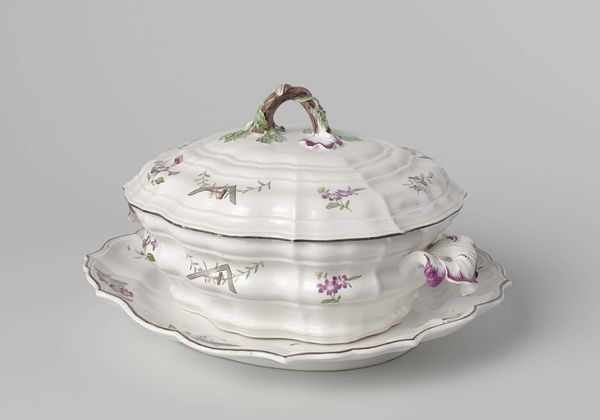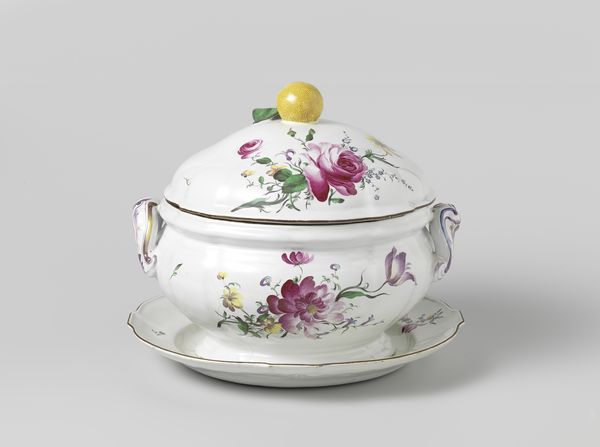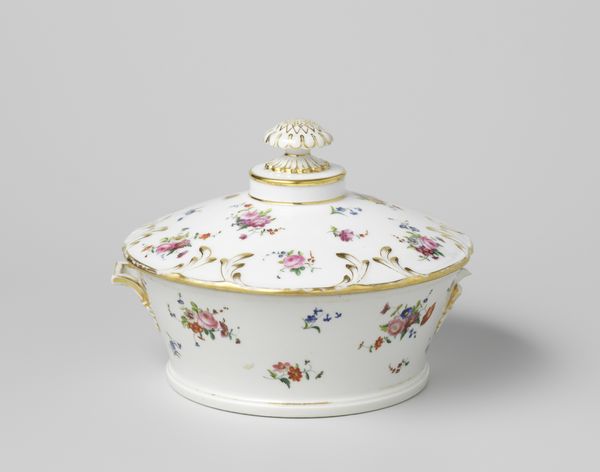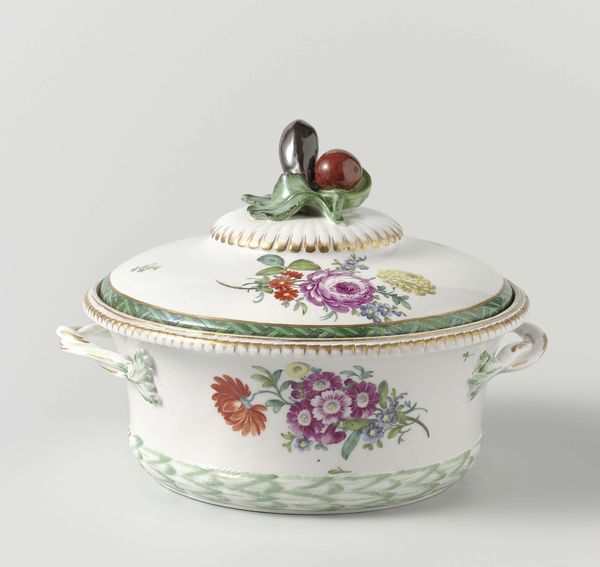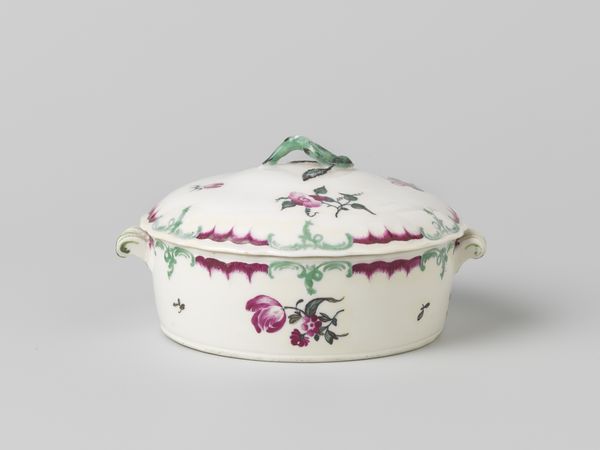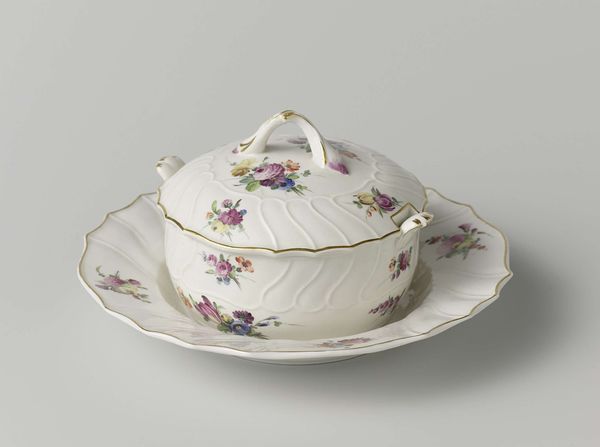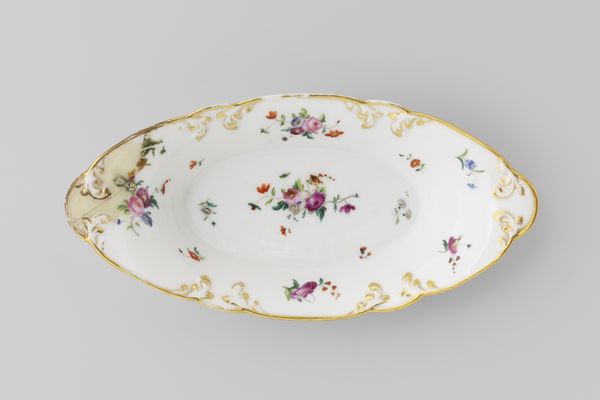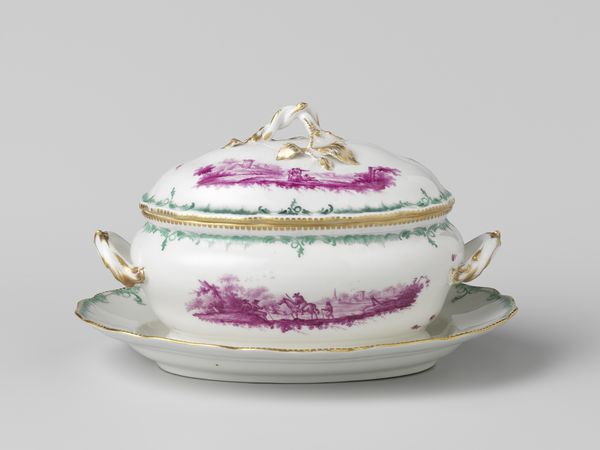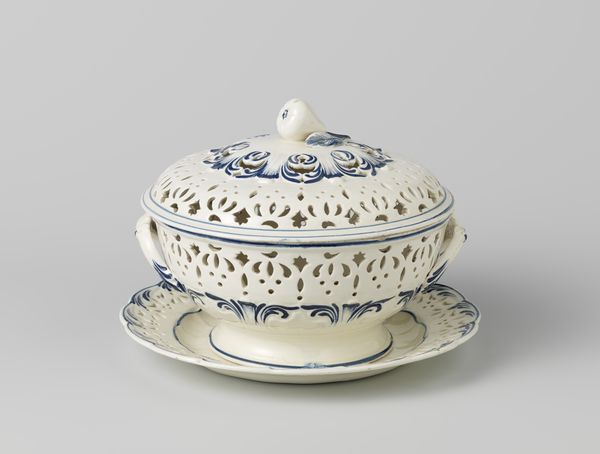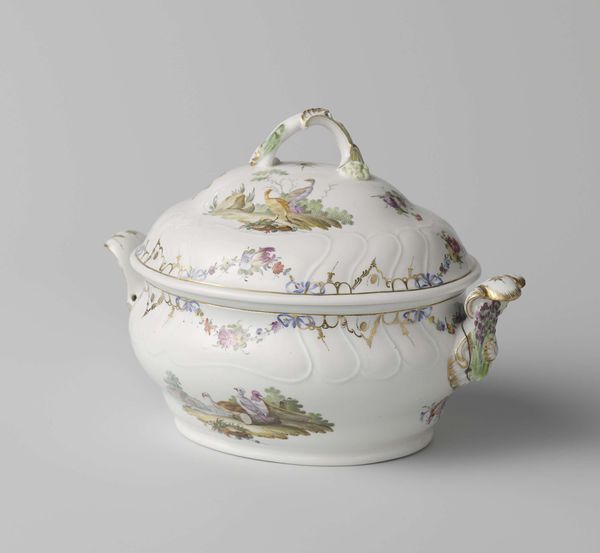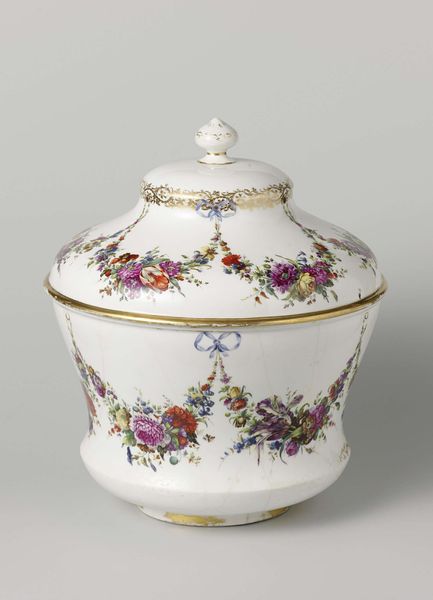
Dish cover (cloche) from a service for Frederick William II of Prussia c. 1780 - 1785
0:00
0:00
Dimensions: height 19.5 cm, diameter 36 cm
Copyright: Rijks Museum: Open Domain
Editor: Here we have a porcelain dish cover, or cloche, crafted around 1780-1785 by the KPM, the Königliche Porzellan Manufaktur. It was part of a service for Frederick William II of Prussia. The floral decorations are so delicate, but the object itself feels quite substantial. What visual language stands out to you in this piece? Curator: Well, first, the choice of flowers themselves speaks volumes. Notice the specific blooms chosen and how they’re rendered. Each carries symbolic weight within the cultural memory of the Rococo period. For example, do you see any repeating motifs? Editor: I do. There are clusters of what look like pansies, and perhaps carnations, scattered about. Curator: Precisely. The pansy, with its name derived from the French "pensée," or thought, often symbolized remembrance and love. And the carnation, depending on its color, could represent affection, admiration, or even rejection. These aren't just decorative flourishes; they're carefully chosen symbols layered with meaning. How might their combination inform our understanding of the patron's desires or aspirations? Editor: So it was more than just decoration; the imagery spoke to a very specific and shared visual vocabulary. Frederick William was making a statement! Curator: Indeed. Think about the ritual of dining, the unveiling of the food beneath this very cover. It's not just about sustenance, but about communicating power, taste, and cultural sophistication through carefully chosen symbolic imagery. The continuity of these floral motifs, recurring across centuries in different contexts, showcases a lasting resonance with human emotions and aspirations. Editor: That gives me a completely different perspective on something that I originally saw as simply decorative. Thanks! Curator: My pleasure. It is fascinating how these seemingly simple objects hold such depth.


